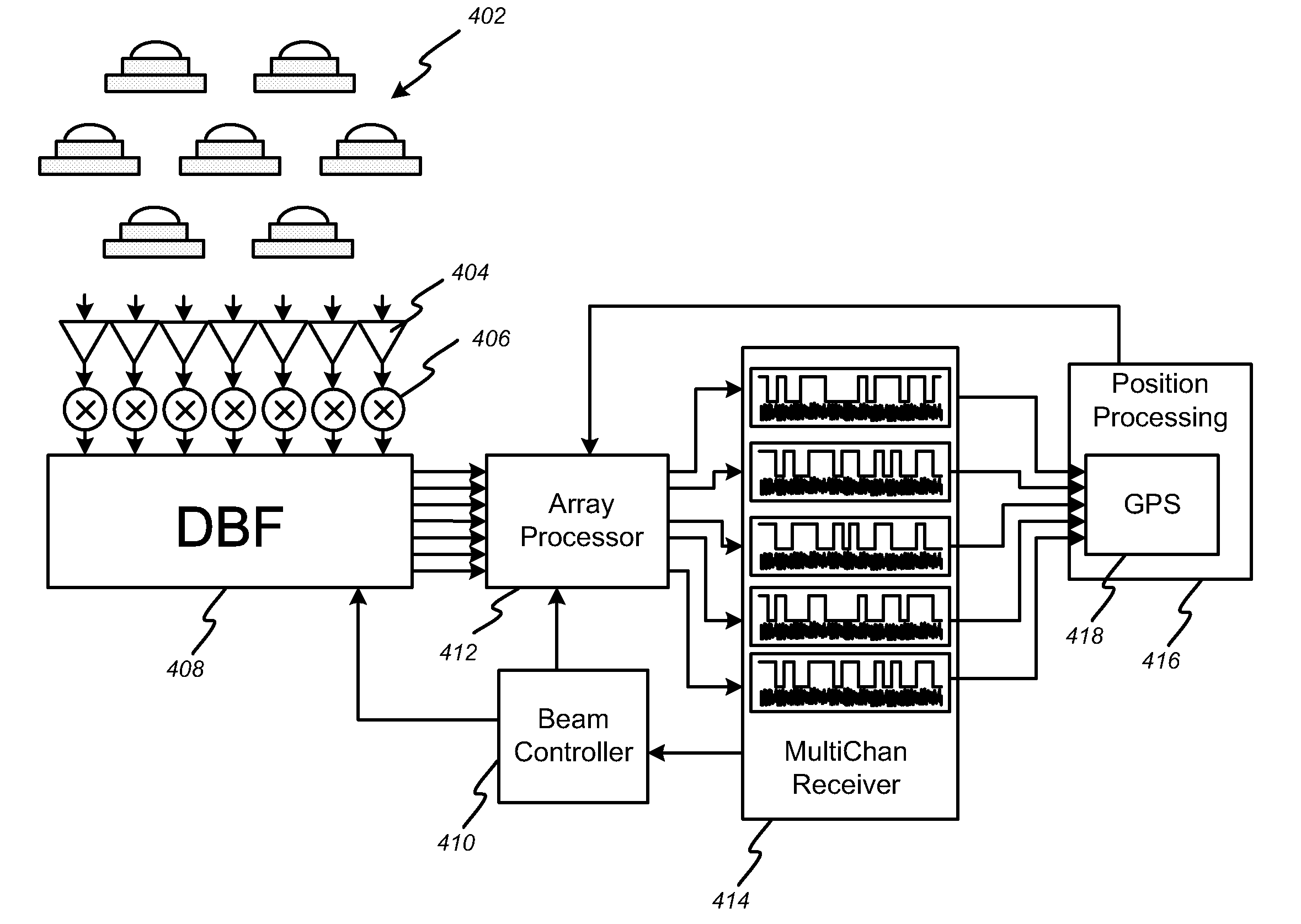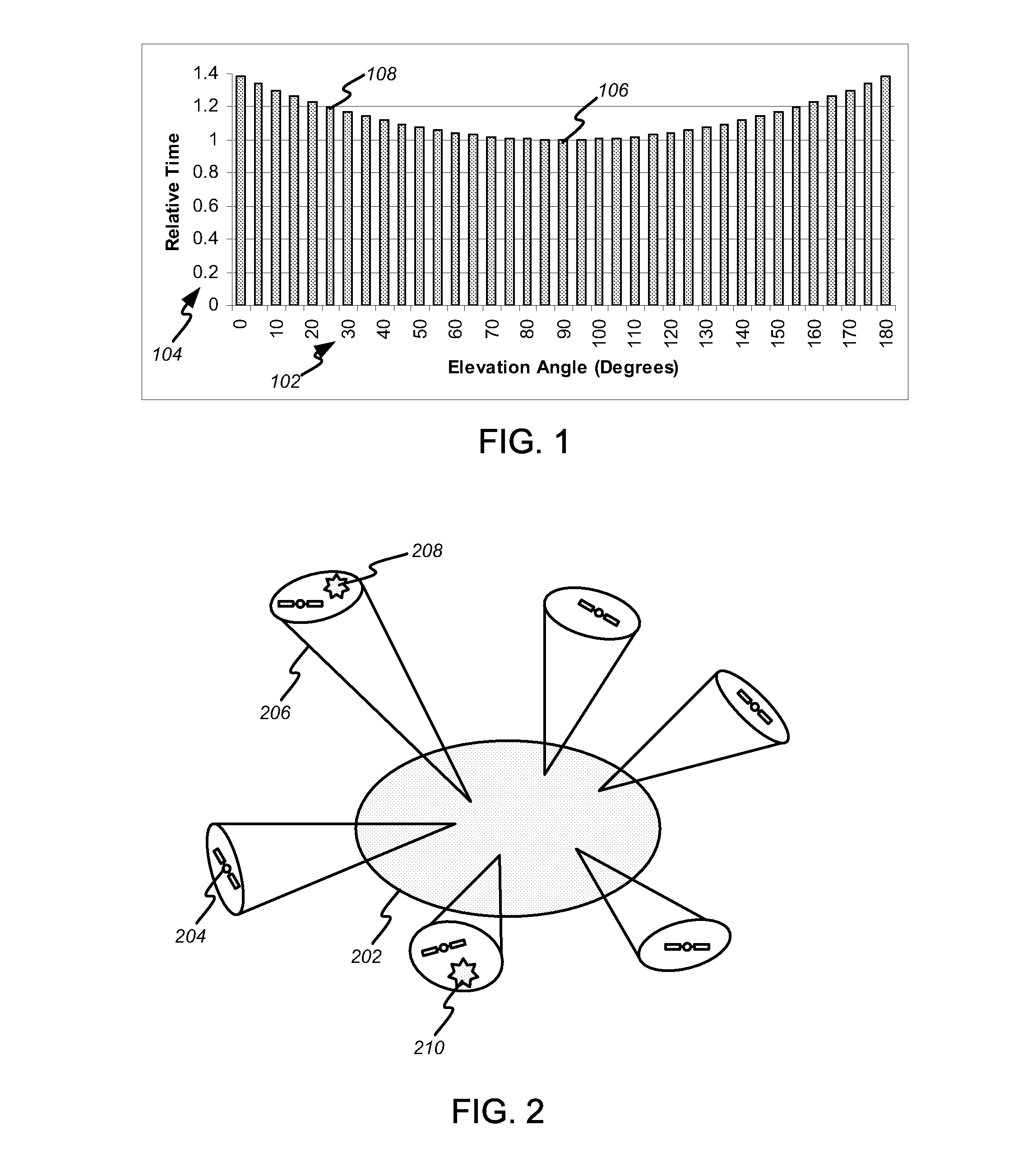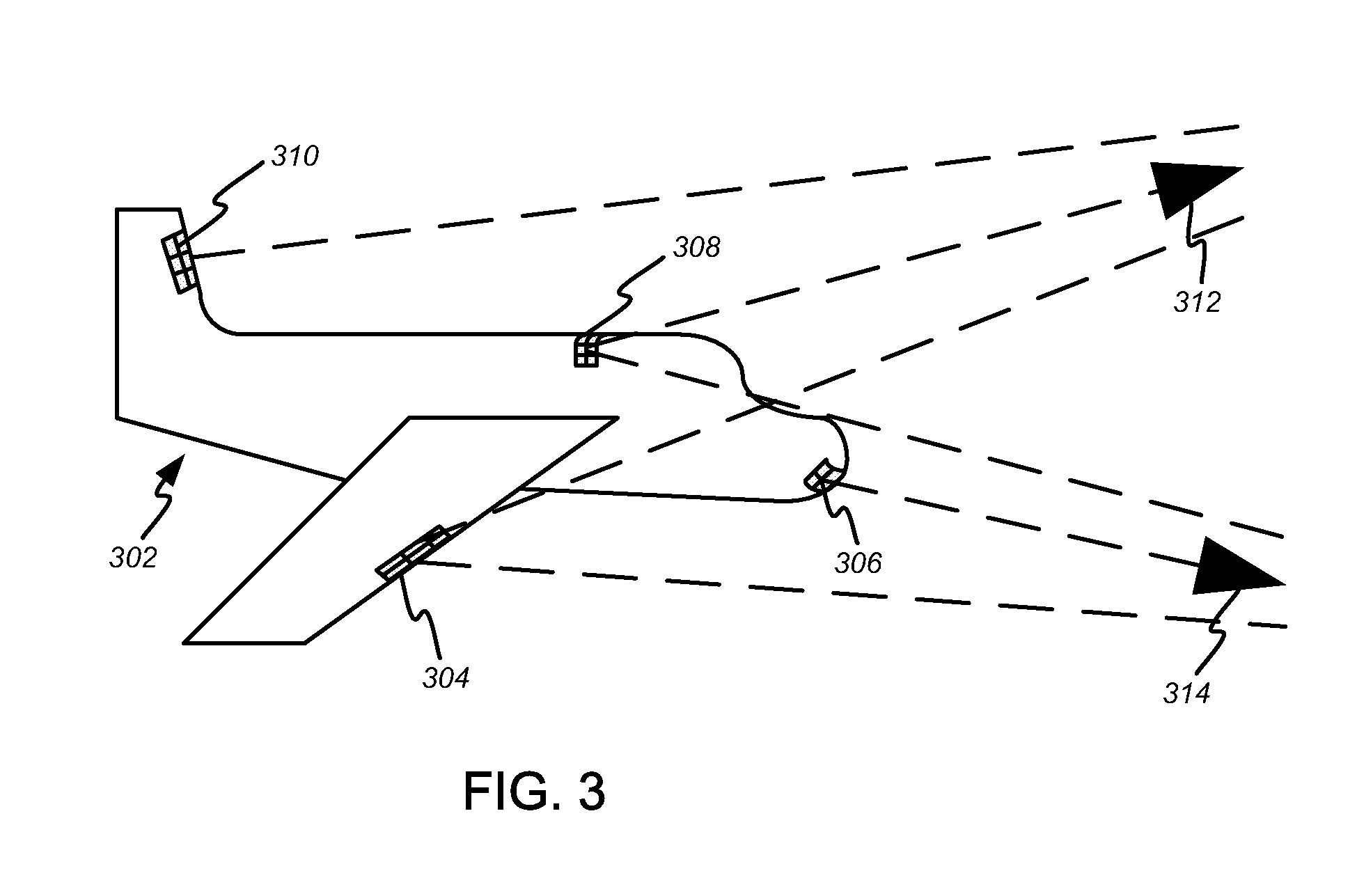Digital beam-forming apparatus and technique for a multi-beam global positioning system (GPS) receiver
- Summary
- Abstract
- Description
- Claims
- Application Information
AI Technical Summary
Benefits of technology
Problems solved by technology
Method used
Image
Examples
Embodiment Construction
[0024]The invention provides an advanced multi-beam GPS receiving system that is capable of detecting multiple interference signals and suppressing gain in the antenna pattern in the interference directions. In the detailed description that follows, like element numerals are used to indicate like elements appearing in one or more of the figures.
[0025]FIG. 1 illustrates that GPS constellation satellites tend to spend the majority of time relatively low on the horizon, from the point of view of an observer, either on the ground or on an airborne platform. In particular, the relative time spent 104 at a particular elevation angle 102 is plotted with respect to the time spent within five degrees of zenith 106, which is normalized to one. For example, bin 108 illustrates that the time a satellite is observed within five degrees of a twenty-five-degree elevation angle is approximately 20% greater than the time spent near zenith, for a satellite that passes through local zenith. For satell...
PUM
 Login to View More
Login to View More Abstract
Description
Claims
Application Information
 Login to View More
Login to View More - R&D
- Intellectual Property
- Life Sciences
- Materials
- Tech Scout
- Unparalleled Data Quality
- Higher Quality Content
- 60% Fewer Hallucinations
Browse by: Latest US Patents, China's latest patents, Technical Efficacy Thesaurus, Application Domain, Technology Topic, Popular Technical Reports.
© 2025 PatSnap. All rights reserved.Legal|Privacy policy|Modern Slavery Act Transparency Statement|Sitemap|About US| Contact US: help@patsnap.com



